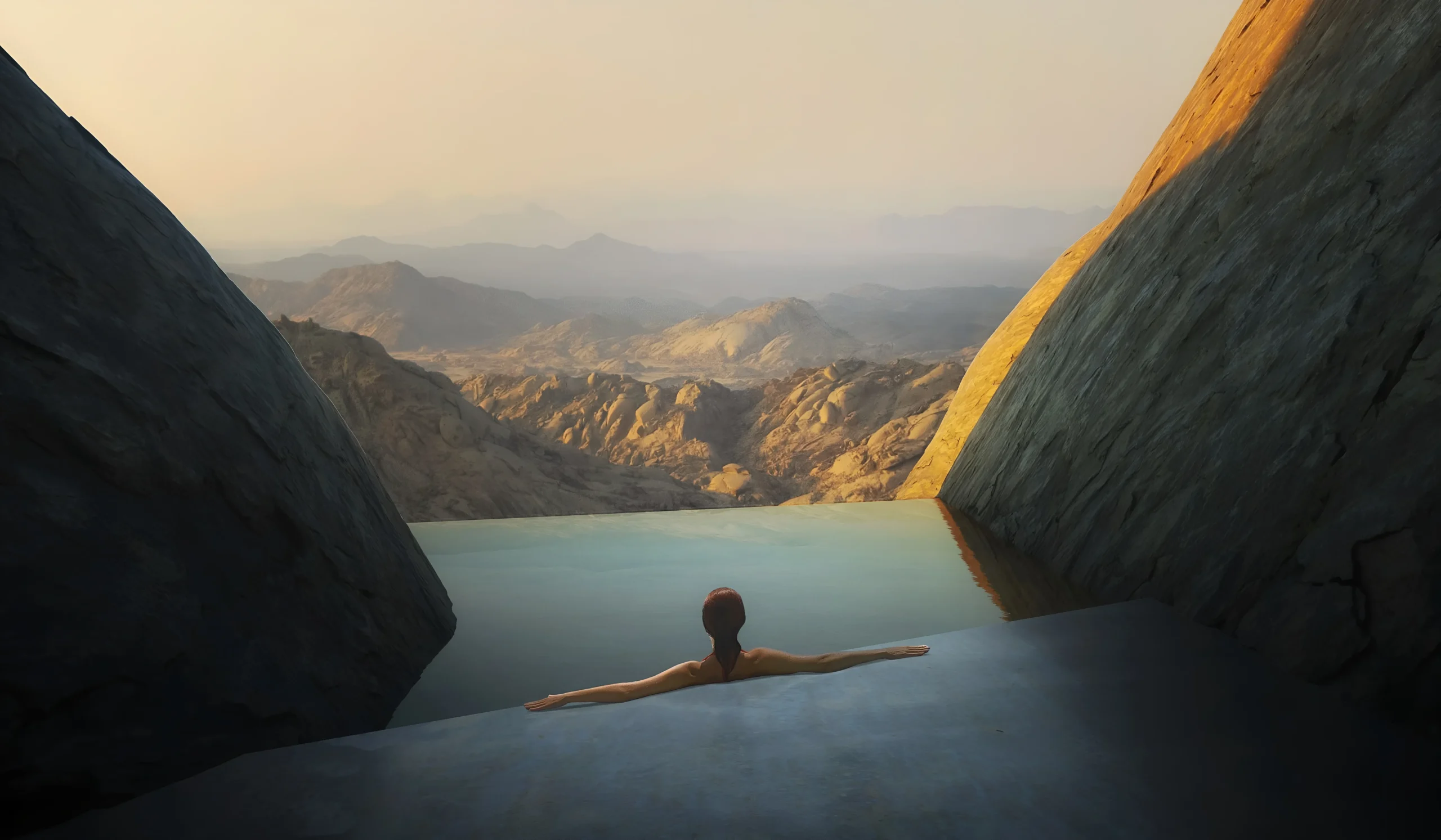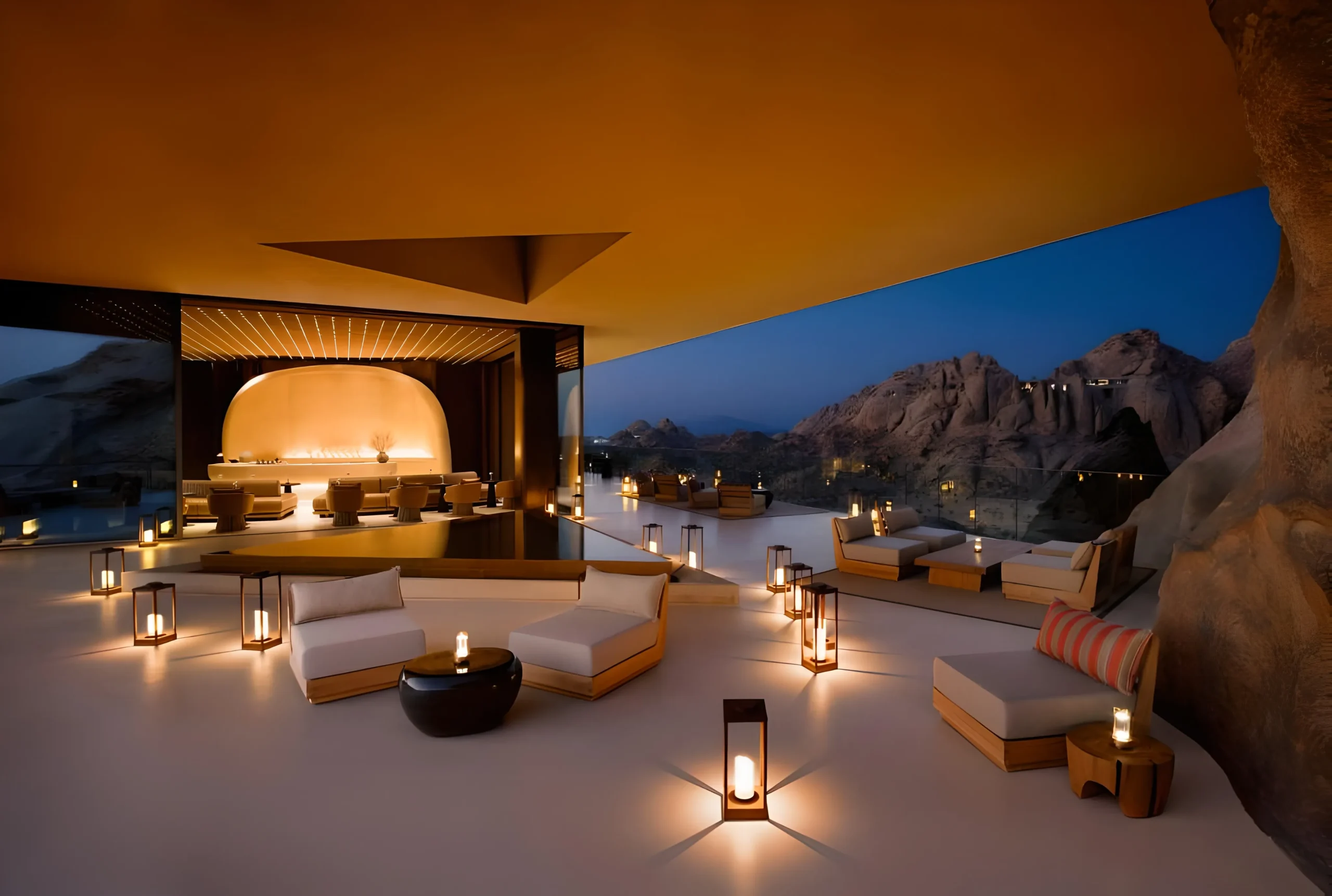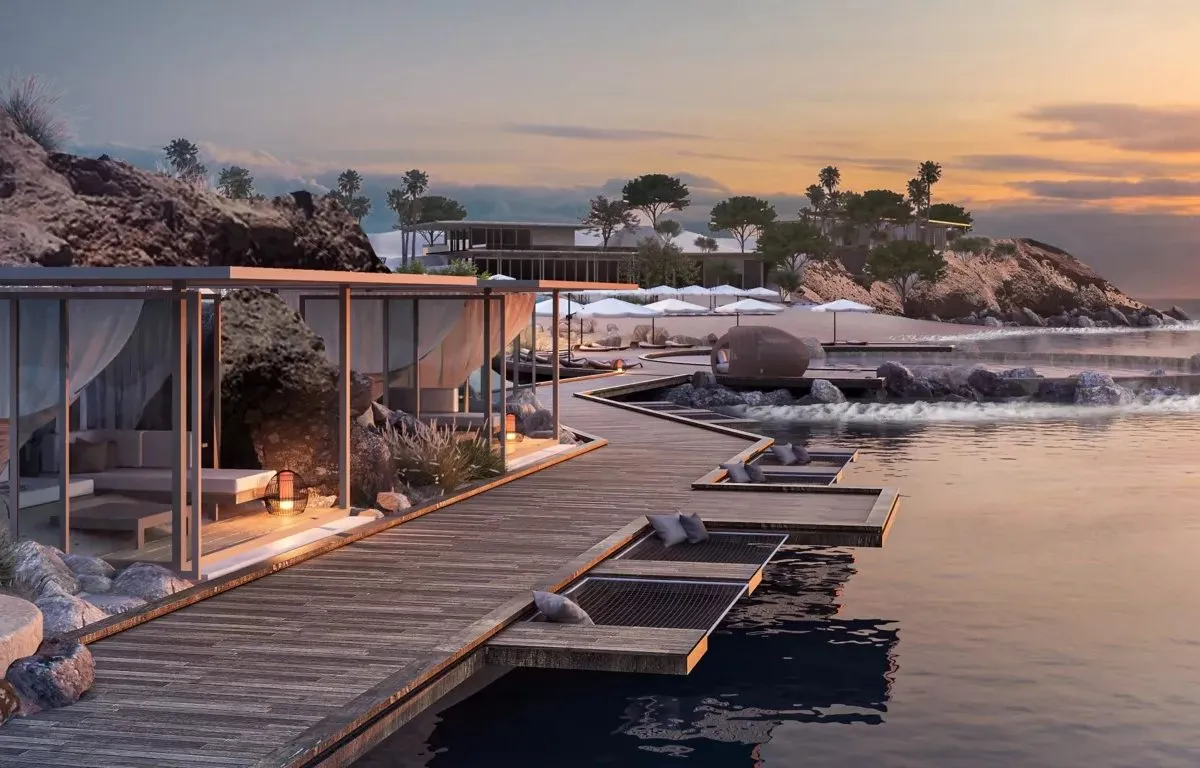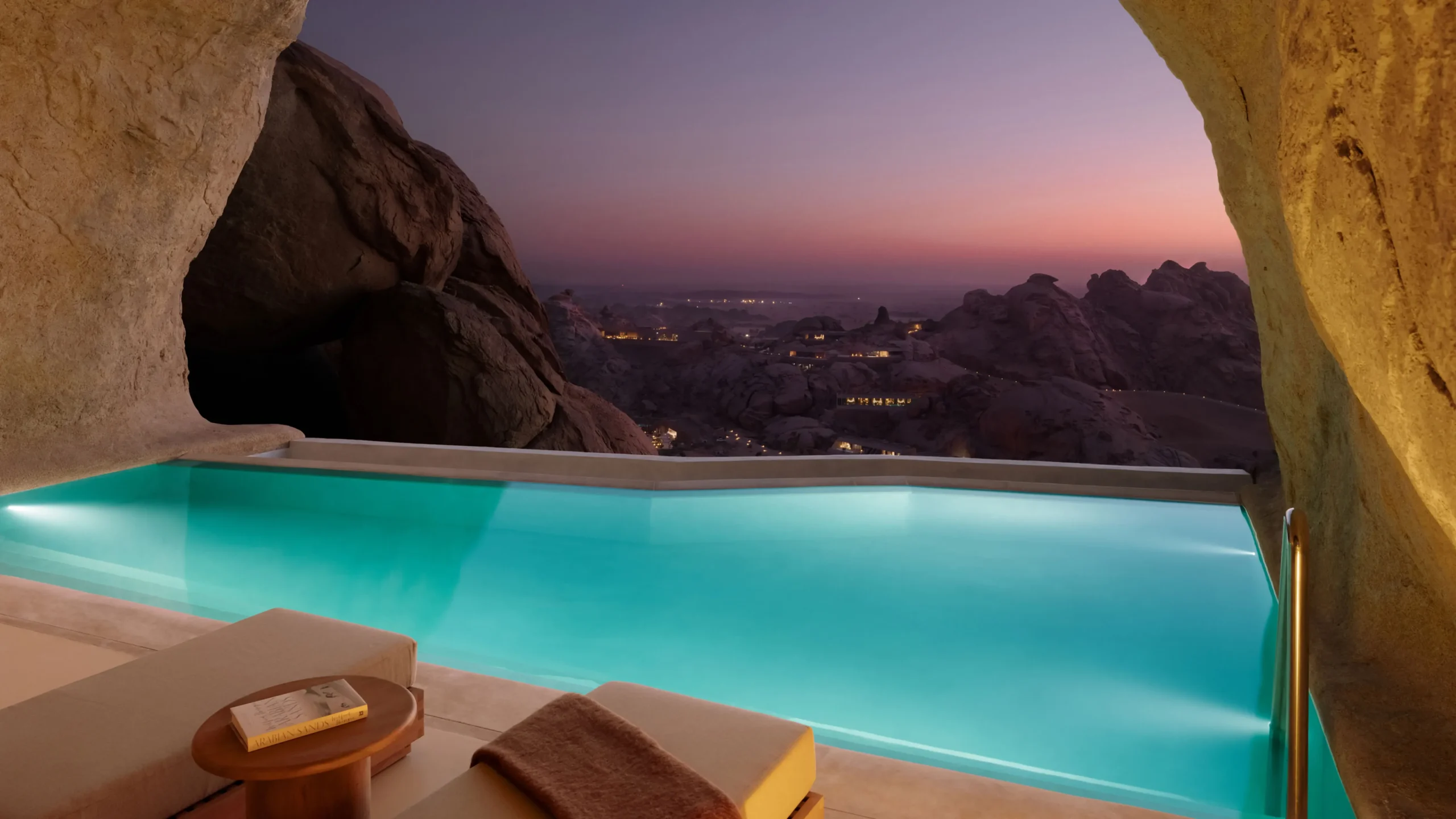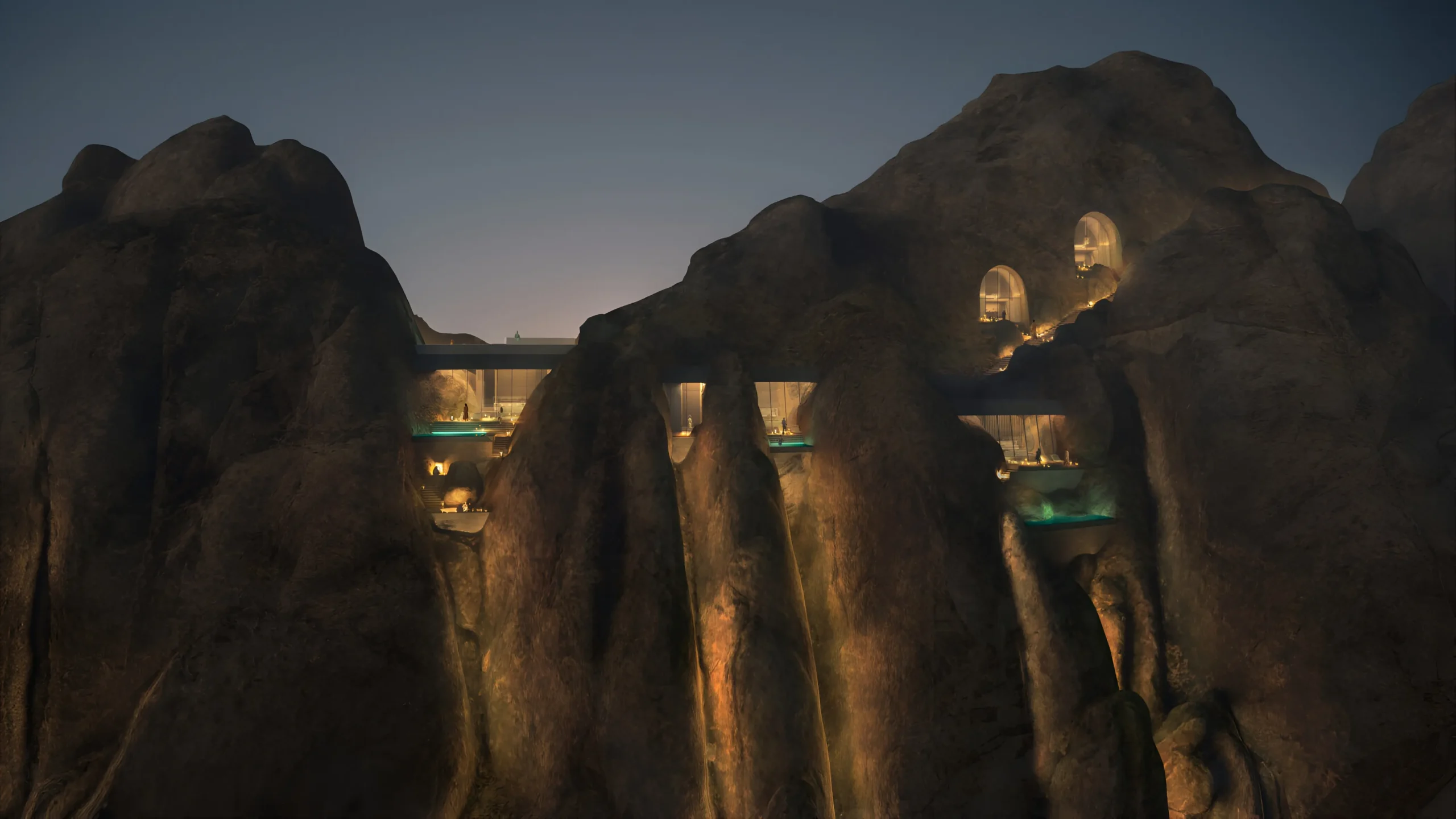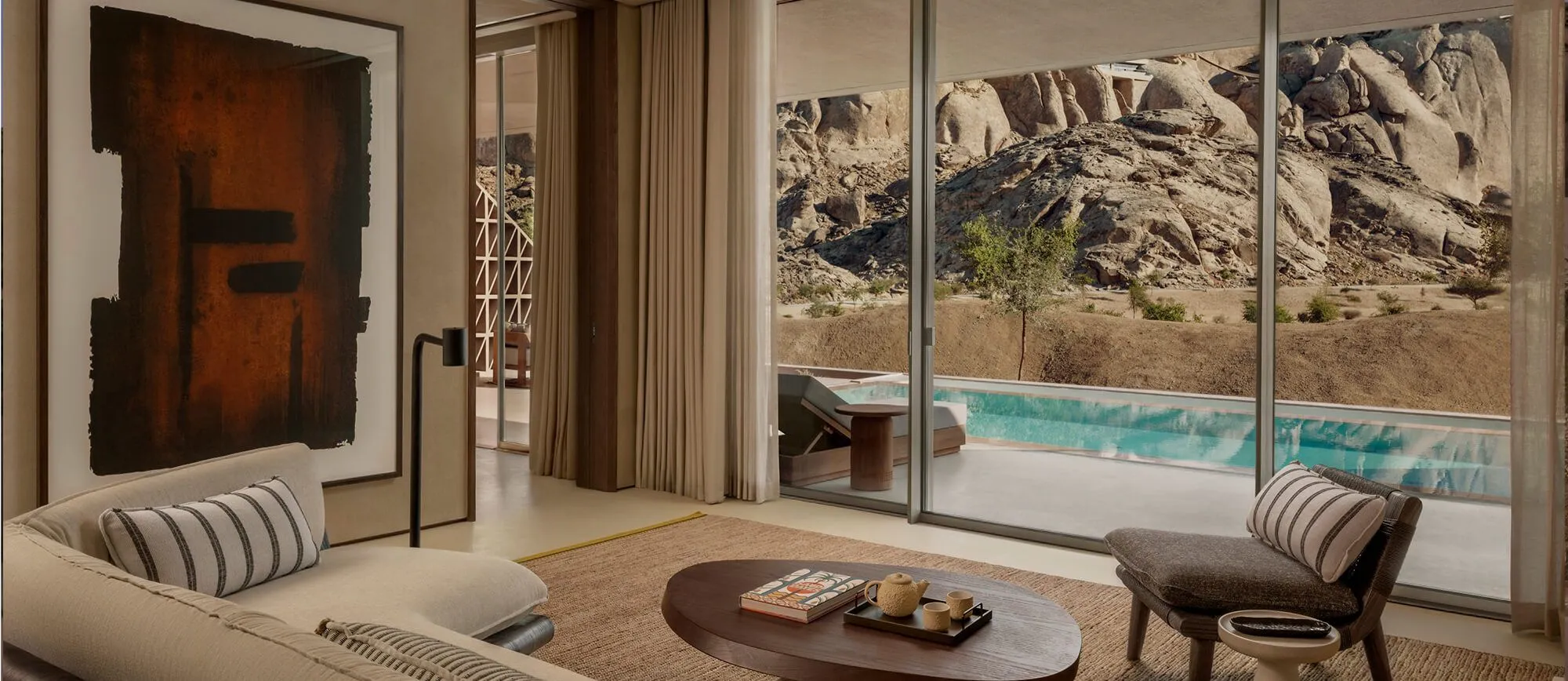By: Niloufar Asefi
For over a millennium, Saudi Arabia has served as the spiritual compass of the Islamic world—its identity woven into the sacred tapestry of Mecca and Medina, its landscapes hallowed by the footsteps of pilgrims. Yet beneath this timeless narrative, a quiet revolution is unfolding. The Kingdom isn’t abandoning its heritage; it’s expanding its lexicon. Today, Saudi Arabia extends an invitation not just to pilgrims, but to pioneers—those who seek luxury not in gilded lobbies, but in the raw embrace of ancient cliffs and endless deserts. This is the dawn of a new era, where the silence of the desert speaks louder than any five-star review.
Rising from the ochre-hued cliffs of the Hejaz Mountains, Desert Rock Resort stands as a paradox—both utterly modern and profoundly ancient. Conceived by Oppenheim Architecture (the visionary firm behind Dubai’s lunar-inspired Sharjah Moon Retreat), this 30,000-square-meter sanctuary is the crown jewel of the Red Sea Global project. But to call it a “resort” feels reductive. This is land art on a monumental scale—a dialogue between human ingenuity and geological time.
The genius lies in its restraint. Unlike Dubai’s gravity-defying skyscrapers or Abu Dhabi’s marble-clad palaces, Desert Rock’s 48 villas emerge organically from the stone, their curved forms mirroring the wind-sculpted contours of nearby canyons. It’s an architectural homage to the Nabataeans, the ancient civilization that carved Petra from rose-colored rock, yet infused with 21st-century sustainability. Solar-thermal cladding maintains perfect indoor temperatures without air conditioning. Living roofs of drought-resistant sedum plants blend structures seamlessly into the landscape.
With nightly rates beginning at $2,200, Desert Rock operates on a different economic paradigm—one where value is measured not in thread counts, but in transformative experiences. Guests don’t merely check in; they’re initiated.
Cliffhanger Villas defy physics, their cantilevered decks hovering 200 meters above the valley floor like fossilized wings. Mountain Crevice Suites nestle into the mountain’s shadowy folds, their interiors cooled by natural rock insulation. Mountain Cave Suites, perched high and ingeniously carved into the massif, feel more like sanctuaries than rooms. The Royal Villa transcends accommodation entirely—a private citadel with a 360-degree observation deck, a plunge pool fed by desert springs, and a staff-to-guest ratio of 5:1.
Yet the true luxury is negative space. With just 96 guests maximum across the entire property, silence becomes a curated experience—broken only by the whisper of wind through wadi cracks or the distant cry of a desert eagle.
And at night, the real show begins. With zero light pollution, Desert Rock offers one of the clearest views of the Milky Way on the planet. The site has even been designated a Dark Sky Reserve, making it one of the few places in the world where stargazing is not just a bonus—but a central ritual.
Desert Rock isn’t an isolated experiment; it’s the physical manifestation of Saudi Arabia’s Vision 2030 blueprint. Where neighboring Gulf states built islands and indoor ski slopes, Saudi Arabia is betting on a more profound shift—the idea that tomorrow’s luxury travelers will prioritize legacy over opulence.
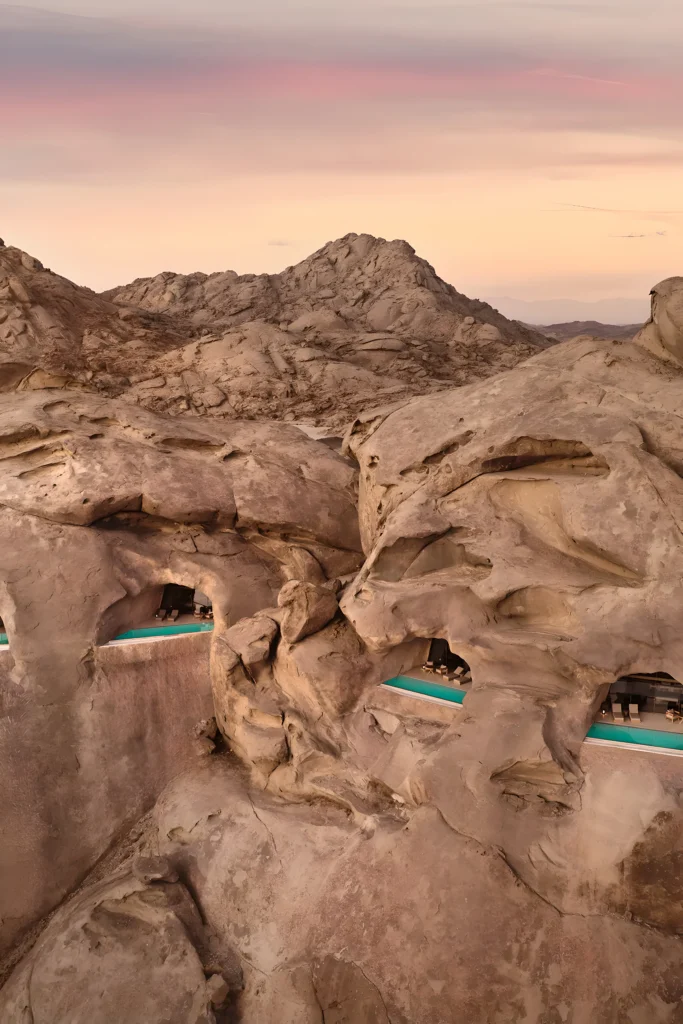
This philosophy ripples through Saudi Arabia’s broader transformation. In AlUla, 2,000-year-old Nabataean tombs now house avant-garde art installations. Along the Tuwaiq Escarpment, a 1,600-kilometer hiking trail traces ancient incense trade routes. Even the forthcoming Desert Dream luxury train (set to debut in 2026) will feature observation cars with glass floors revealing fossil beds beneath the tracks.
For those seeking more adrenaline than introspection, the nearby Akun Adventure Hub offers ziplining, hiking, and rock climbing—ensuring that the desert caters to both the contemplative and the kinetic.
What makes Desert Rock revolutionary isn’t its design or price point—it’s the emotional calculus. In a world where luxury resorts compete over infinity pools and champagne menus, Saudi Arabia has built a place that demands something rarer: stillness.
Guests often recount the same epiphany. It comes at dawn, when the rising sun sets the cliffs ablaze in gradients of copper and gold. Or at midnight, when a sky untouched by artificial light reveals ancient constellations with shocking clarity. In these moments, the resort’s true purpose crystallizes—not to impress, but to imprint.
As one visitor (a jaded Silicon Valley CEO) confessed in the resort’s leather-bound guest book: “I came for the Instagram shots. I’m leaving with something far more dangerous—a sense of perspective.”
The global hospitality industry is taking notes. Four Seasons has quietly scouted nearby sites for a “cliff-hanging” competitor. LVMH’s Cheval Blanc is reportedly developing a nomadic luxury camp in the Empty Quarter inspired by Desert Rock’s ethos. But Saudi Arabia’s advantage runs deeper than mimicry—it’s the authenticity of a nation rediscovering its own terrain.
When Crown Prince Mohammed bin Salman first unveiled Vision 2030, critics dismissed it as another oil-rich fantasy. But walking through Desert Rock’s shadow-cooled corridors—where the scent of wild za’atar mingles with the mineral tang of stone—one grasps the larger truth. This isn’t just economic diversification. It’s the reanimation of an ancient relationship between land and people.
The resort’s final surprise? Its ability to make even the most seasoned travelers feel like temporary Bedouins. As the sun dips below the horizon, casting the mountains in violet relief, the staff serve not fanfare but ritual. It’s a quiet rebellion, proving that the future of luxury might not lie in more, but in more meaningful.
For those willing to listen, the desert has always been speaking. Now, Saudi Arabia has built the architecture to amplify its voice.


